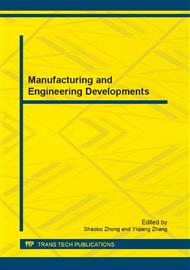p.709
p.714
p.718
p.722
p.726
p.731
p.736
p.741
p.745
Model Validation Method for Simulation Experiment System of Complex Electromagnetic Environment
Abstract:
It is a challenging task to control an unmanned aerial vehicle (UAV) in complex electromagnetic environment. The effective anti-jamming simulation is an economical and efficient method to test and verify the control effect of an UAV. This paper introduces a method to construct an anti-jamming simulation system for an UAV firstly. Then, the procedure to validate the anti-jamming performance of an UAV is proposed. In the following, the evaluation methods in signal level and function level are described in detail for the model validation. The model effectiveness is evaluated both qualitatively and quantitatively. The simulation test results agree with the flight results very well.
Info:
Periodical:
Pages:
726-730
Citation:
Online since:
January 2013
Authors:
Keywords:
Price:
Сopyright:
© 2013 Trans Tech Publications Ltd. All Rights Reserved
Share:
Citation:


